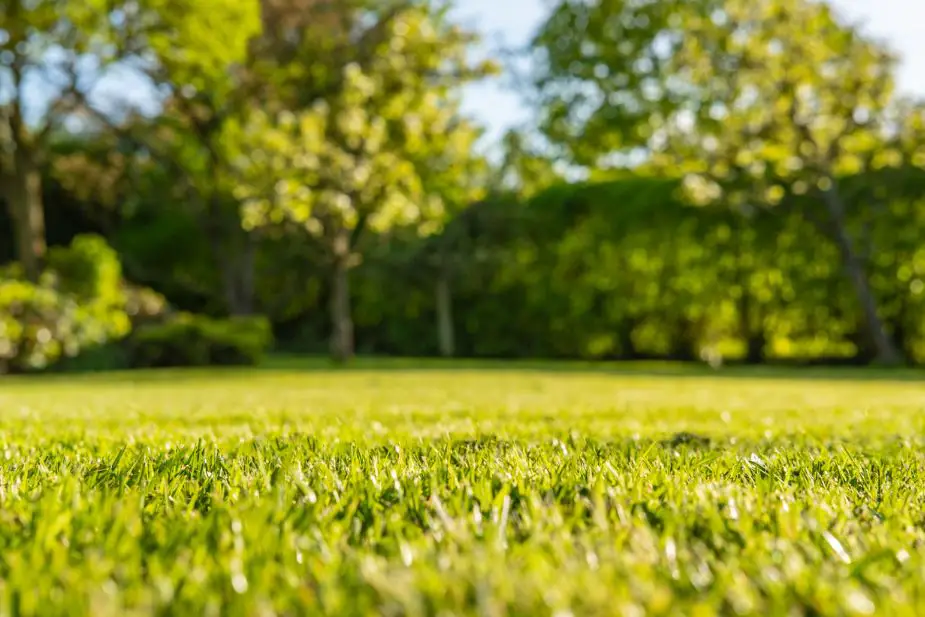The early lawns were grown around English and French castles out of need, but they did not become common in the Northeast United States till the late 18th century. It all boils down to picking the finest grass seed and the optimum time to sow grass seed in the Northeast. Nowadays, at least one house on the block with a lawn is undoubtedly the envy of all the rest. Moreover, it entails adhering to a particular lawn fertilization plan for the Northeast, weed control, and autumn grass maintenance. Keep reading to find out what it takes to get a picture-perfect lawn.

Grass Choices for Northeast Lawns
As was previously noted, lawns were first grown in the 16th century out of need. Around the castles, trees would be cut down, shrubs eliminated, and wild grasses permitted to grow organically. The justification was to prevent enemy forces from ambushing the castle covertly and to allow the castle’s occupants to monitor the surrounding landscape.
The lawns of the 16th century did not include the grasses we cultivate now. The turf grasses of today were specifically chosen or created with a few parameters in mind. Because of its resilience to freezing temperatures, Kentucky bluegrass is typically seen in New England grasslands. Fescues, perennial ryegrass, buffalo grass, bentgrass, blue grama, St. Augustine, centipede grass, and switchgrass are a few more types of grass that might be used in a turf mix.
When in the Northeast to plant grass seed
In the Northeast, plant grass seed in the late summer to early autumn when weed competition is minimal and the temperature is just right for grass germination and growth. It is not advised to plant after October since the soil can be too wet.
You may be overseeded in the late winter, early spring, or early autumn if you want to renovate smaller barren sections or thin grass patches.
As long as there is access to watering, sod may be put virtually any time of the year. Yet installing sod during the hot, dry summer will need more water and time to take root.
How to Fertilize Grass in the Northeast
Since turf plants need more nitrogen, phosphorous, and potassium than is in the soil, fertilizer is essential for a lush, healthy lawn. The simplest way to determine how much of any nutrient your sod requires is to do a soil test. You may not need extra fertilizers if you use a mulching mower since the grass clippings break down and contribute nutrients to the lawn.
But, in most cases, a slow-release fertilizer containing nitrogen should be applied annually to turf grasses in the mid-to-late spring, late summer, or early autumn. As directed by the manufacturer, apply fertilizer.
Since the application rates depend on the weed killer and not the fertilizer, avoid using an all-in-one weed killer and fertilizer. If rain is expected, avoid fertilizer applications.
Turf grass weeds
In the yard, weeds are not always a terrible thing. Several weeds, including dandelions and clover, are important food sources for bees. It may be time to look into weed management options if you have a bee allergy or clover is taking over the lawn.
The greatest approach to keep weeds under control is to develop strong grass. Choose the ideal grass seed or mixture for your surroundings. Encourage grass growth by watering and mowing; weeds grow more quickly when irrigation is sporadic, and mowing is short. Weeds are encouraged by insect infestation and compact soil. You can maintain a healthy lawn by fertilizing it at the proper times and rates.
Going outside and pulling weeds by hand takes the most time but is the least damaging to the environment.
Mowing Tips
- A healthy lawn may be maintained with careful mowing.
- There is no need to bag or rake grass cuttings unless your lawn is only cut seldom. Just let them decompose so that they may replenish the turf grass’s nutrients.
- Try to avoid cutting the grass while it is damp. The grass will not die in wet circumstances, but compacted soil might create water runoff and other problems.
- Change your travel direction to promote upright growth every time you mow the grass.
- Sharpen the mower blades. Injuries happen from grass being torn by dull blades.

